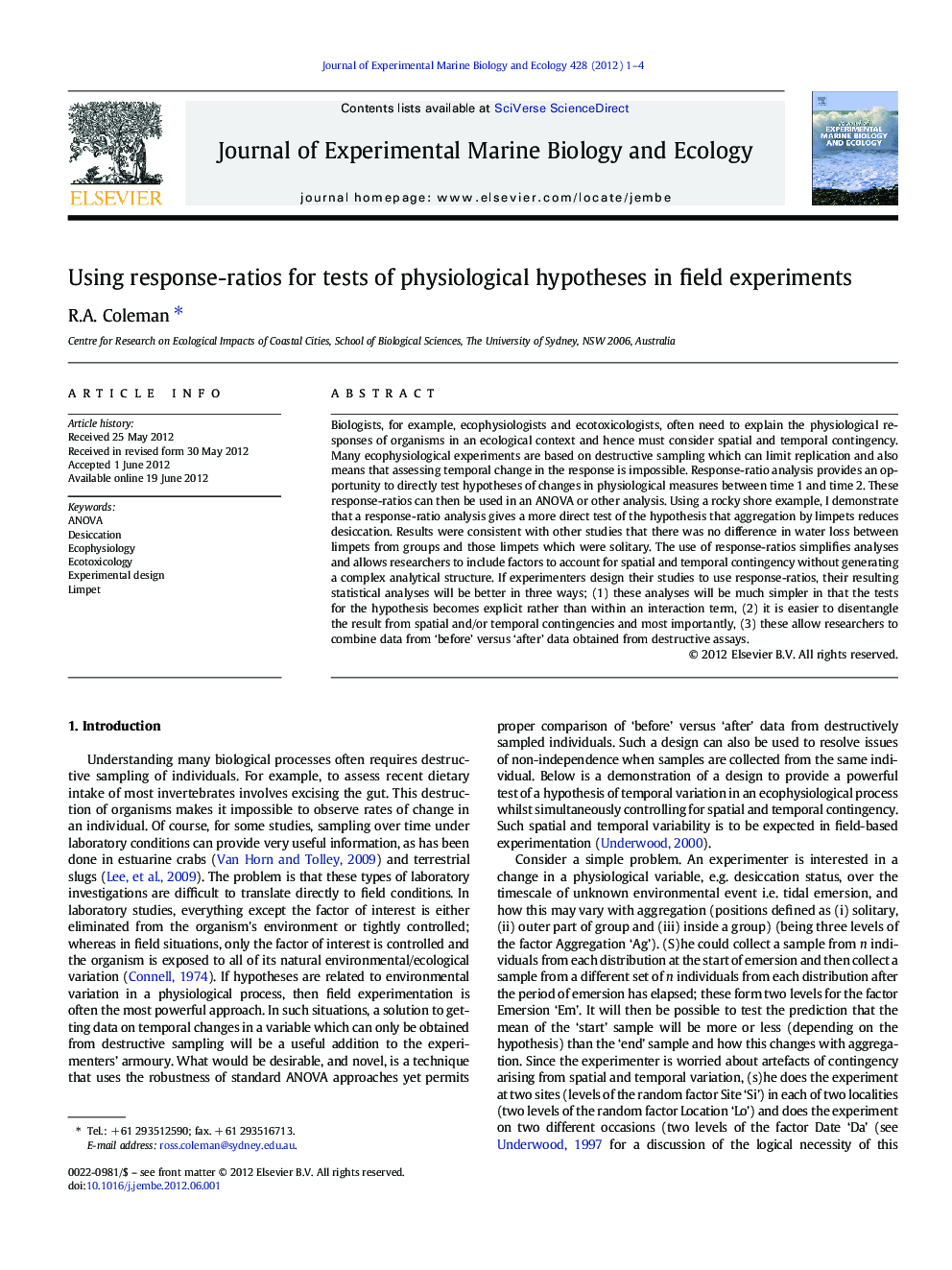| Article ID | Journal | Published Year | Pages | File Type |
|---|---|---|---|---|
| 4395988 | Journal of Experimental Marine Biology and Ecology | 2012 | 4 Pages |
Biologists, for example, ecophysiologists and ecotoxicologists, often need to explain the physiological responses of organisms in an ecological context and hence must consider spatial and temporal contingency. Many ecophysiological experiments are based on destructive sampling which can limit replication and also means that assessing temporal change in the response is impossible. Response-ratio analysis provides an opportunity to directly test hypotheses of changes in physiological measures between time 1 and time 2. These response-ratios can then be used in an ANOVA or other analysis. Using a rocky shore example, I demonstrate that a response-ratio analysis gives a more direct test of the hypothesis that aggregation by limpets reduces desiccation. Results were consistent with other studies that there was no difference in water loss between limpets from groups and those limpets which were solitary. The use of response-ratios simplifies analyses and allows researchers to include factors to account for spatial and temporal contingency without generating a complex analytical structure. If experimenters design their studies to use response-ratios, their resulting statistical analyses will be better in three ways; (1) these analyses will be much simpler in that the tests for the hypothesis becomes explicit rather than within an interaction term, (2) it is easier to disentangle the result from spatial and/or temporal contingencies and most importantly, (3) these allow researchers to combine data from ‘before’ versus ‘after’ data obtained from destructive assays.
►Response-ratios can measure spatio-temporal variation in a physiological variable. ►I used response-ratio analysis to test aggregation and limpet desiccation. ►Analyses show that aggregating does not influence desiccation. ►The log response-ratio approach results in a simpler analysis. ►Log response-ratios are a simple way to solve non-independence.
